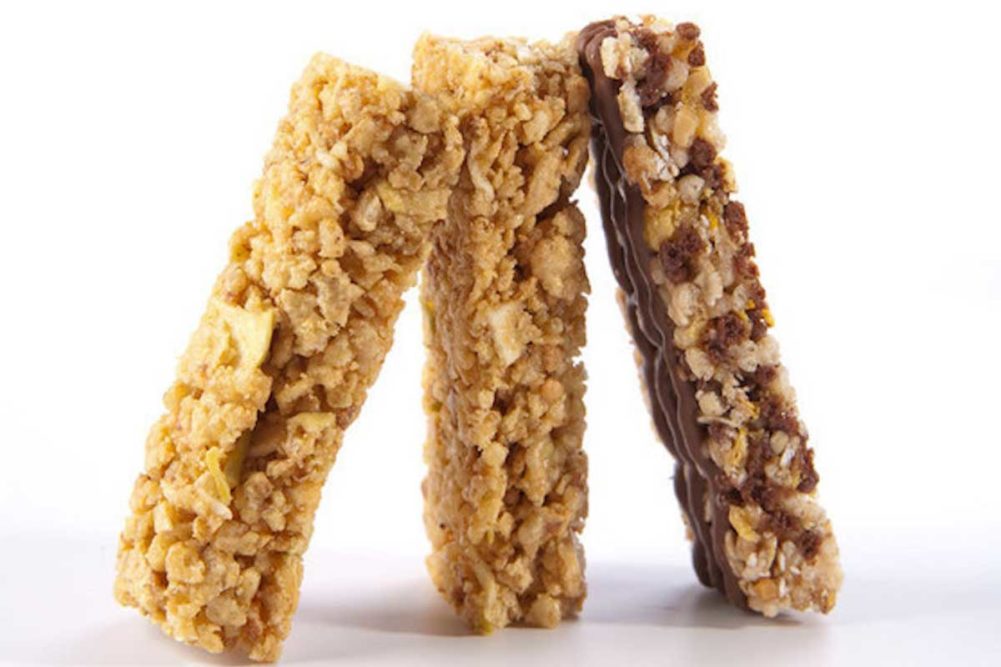Protein is hot with consumers, and manufacturers of bars and snacks are responding with many new alternatives on the market. Protein is associated with healthy lifestyles and helping to build muscles, among other benefits.
“High-protein snacks have a health halo among consumers because of their benefits in human nutrition and weight management,” said Tanya Jeradechachai, vice president of ingredient solutions, research and development, MGP Ingredients Inc. “There is a significant surge of keto-friendly snacks based on high customer demand for our wheat protein isolates, and we have yet to see this trend leveling off.”
Capitalizing on this trend and taking it a step further, bar makers are promoting other claims with these snacks for the health conscious, including low sugar, gluten- and grain-free, plant-based, clean label and more.
Nicole Redini, category strategy manager, F&BS, North America, Tate & Lyle, pointed to Mintel’s Global New Products Database, which shows that products launched over the past two years in the snack and bakery categories that contained a high/added protein claim have also focused on several clean label claims and appeared on at least 50% of new product launches over the past three years.
Additionally, 75% of consumers said they would pay a premium price for snacks and treats fortified with protein, according to a 2021 Kerry survey.
With several protein options, it’s important to understand what sources are available, the benefits they bring and how they will affect claims on labels.
A wide variety of proteins are available to fortify bars and snacks, including wheat, soy, whey, peas and other pulses, nuts and ancient grains.
Wheat proteins are versatile and can be used in many high-protein salty snacks and bars, Ms. Jeradechachai said, although they, like many high-protein products, can have tough textures if used in large concentrations.
“They provide viscoelastic properties and protein enhancement in keto-friendly salty snacks, such as pretzels, chips and crackers,” she said. “In high-protein bars, wheat protein isolates are used as binders, and the texturized wheat proteins are added for texture.”
She added that wheat protein isolates can form film and entrap air, which can create light and airy snacks.
Soy protein has been widely used for years and provides versatility in formulations.
“It’s a product that has been developed with love for many years, and it works well in all these spaces,” said Chad Rieschl, principal food scientist, North American applications team, Cargill. “It’s amazing how it works everywhere. All these proteins are catching up to see how they can be in that place.”
Dairy protein is another choice that provides several benefits for snack bars.
“For high-protein bars, dairy proteins — whey and milk proteins — provide an ideal solution as they are high in protein, clean flavored and have a complete protein profile to give a PDCAAS of 1.0,” said Steve Adolphson, research manager, bar applications at Glanbia Nutritionals.
PDCAAS, or protein digestibility-corrected amino acid score, rates the quality of a protein based on people’s amino acid requirements and ability to digest it, with 1.0 being the highest score. That means the protein will provide 100% of all the amino acids required in a diet.
“Plant-based proteins can also be a good choice, but they tend to have lower protein loads, and commonly have flavor challenges that need to be overcome,” Mr. Adolphson continued. “In addition, as the protein quality is not as high, a combination of different plant-based proteins needs to be used if there will be a claim made around high protein in the bar.”
Dairy proteins can also help bars maintain a soft texture.
“We would suggest including a hydrolyzed whey protein, as it will help with shelf life and slow the hardening of a high-protein bar,” said Peggy Ponce, Agropur’s director of product innovation.
This article is an excerpt from the February 2022 issue of Baking & Snack. To read the entire feature on Protein, click here.





